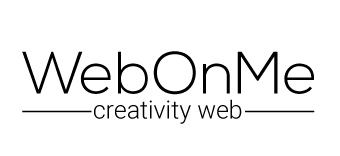5 Reasons Why You Need a Personal and Portfolio Website and How to Create a Stunning One

Personal and Portfolio Websites: The Ultimate Guide to Why You Need One and How to Get Started
In today’s digital age, having a personal or portfolio website is no longer a luxury—it’s a necessity. Whether you’re a freelancer, a creative professional, or someone looking to establish a personal brand, your personal portfolio website acts as a digital business card, showcasing your skills and work to the world. Let’s dive into why personal and portfolio websites are essential and how you can create one that stands out.
Why You Need a Personal or Portfolio Website

Showcase Your Work
A personal or portfolio website is the best way to present your work in an organized and visually appealing manner. Whether you’re a photographer, writer, web designer, or developer, a dedicated portfolio website helps you display your projects, making it easier for potential clients or employers to see your skills and experience.
Build Your Personal Brand
Your personal website is a reflection of you. It’s a platform where you can share your story, showcase your expertise, and establish your unique style. With a well-crafted personal or portfolio website, you can build a personal brand that sets you apart in a crowded market.
Gain Credibility
A professional-looking portfolio website adds credibility to your personal brand. It shows that you are serious about your work and provides a platform for potential clients or employers to learn more about you. With a personal portfolio website, you control the narrative and how your work is presented.
Stand Out from the Competition
In a saturated market, a portfolio website helps you differentiate yourself from the competition. It provides a centralized place where you can highlight your best work, client testimonials, and case studies. By offering a glimpse into your process and showcasing your unique skills, you can attract the right audience.

Key Elements of a Successful Personal or Portfolio Website
A Compelling Homepage
The homepage is the first impression visitors get of your personal portfolio website. Make sure it is clean, professional, and visually engaging. It should clearly communicate who you are, what you do, and the type of work you specialize in. Consider including a hero image or a video background to make an impact.
About Me Page
The “About Me” page is your chance to connect with your audience on a personal level. Share your story, your journey, and what motivates you. Be authentic and let your personality shine through. This page should answer the question, “Why should someone work with you?”
Portfolio or Work Showcase
The heart of your personal or portfolio website is the portfolio section. Display your best work in a well-organized, easy-to-navigate format. Include high-quality images, descriptions of each project, and the role you played. Consider categorizing your projects to help visitors find relevant work quickly.
Testimonials and Case Studies
Client testimonials add credibility and demonstrate the value you bring to your clients. If possible, include case studies that showcase your problem-solving skills, process, and the results you achieved. This will help potential clients understand how you can help them with their specific needs.
Personal and Portfolio Websites

Contact Information
Make it easy for visitors to get in touch with you. Include a contact form, email address, or links to your social media profiles. The easier it is for someone to reach out, the more likely you are to get inquiries.
Blog or Updates Section
Including a blog or updates section on your personal portfolio website can help establish you as an expert in your field. Share insights, tips, and case studies related to your industry. Not only does this provide value to your visitors, but it also improves your website’s search engine optimization (SEO), helping you rank higher in search results.
Responsive Design
With more people browsing the web on their mobile devices, having a responsive portfolio website design is crucial. Ensure that your site looks great and functions well on all devices, from desktops to smartphones. This improves the user experience and can help reduce your bounce rate.


